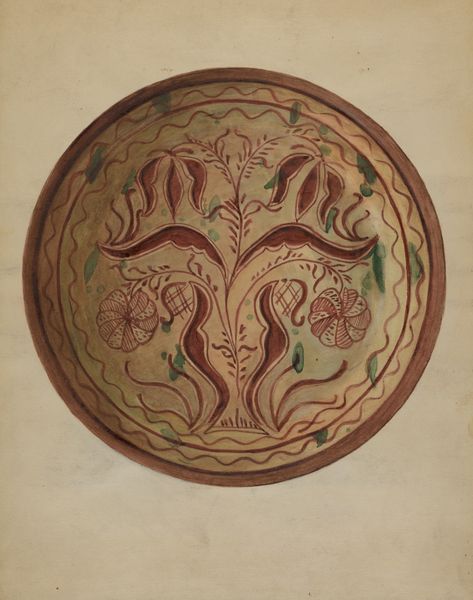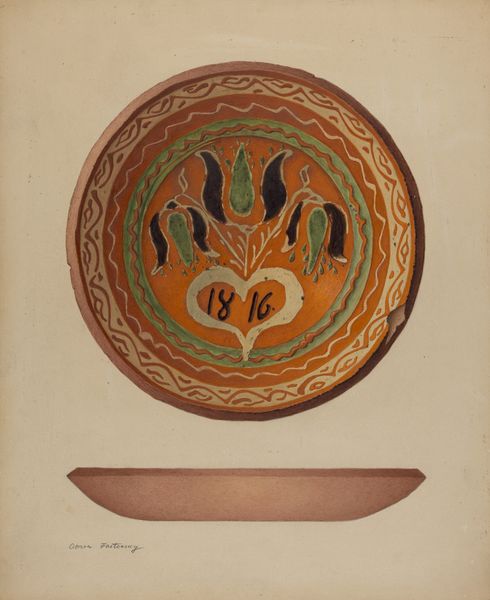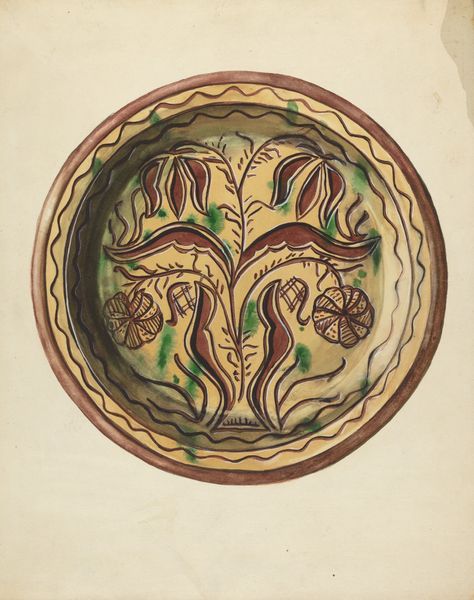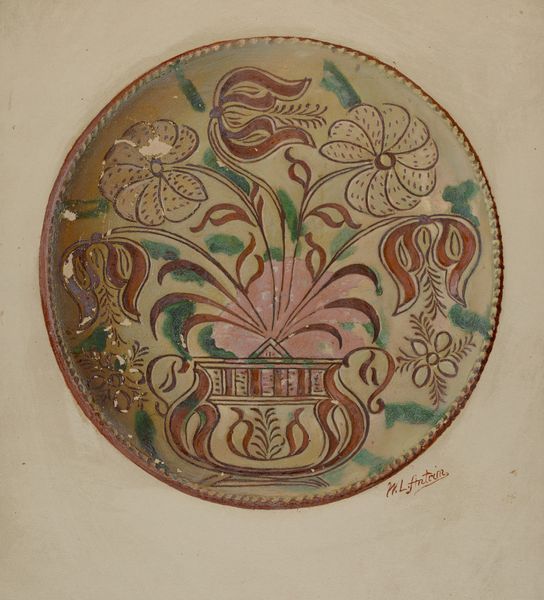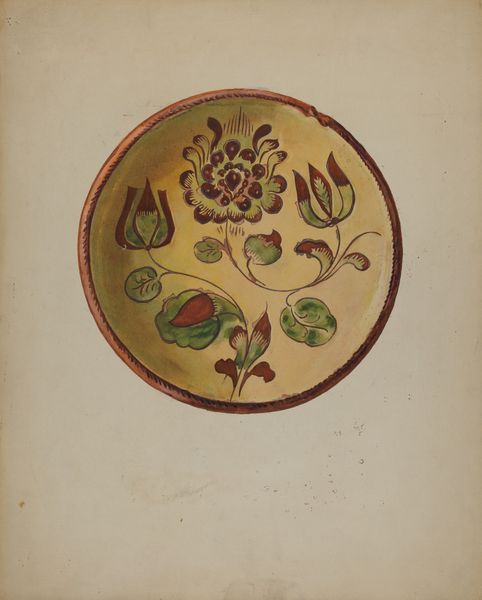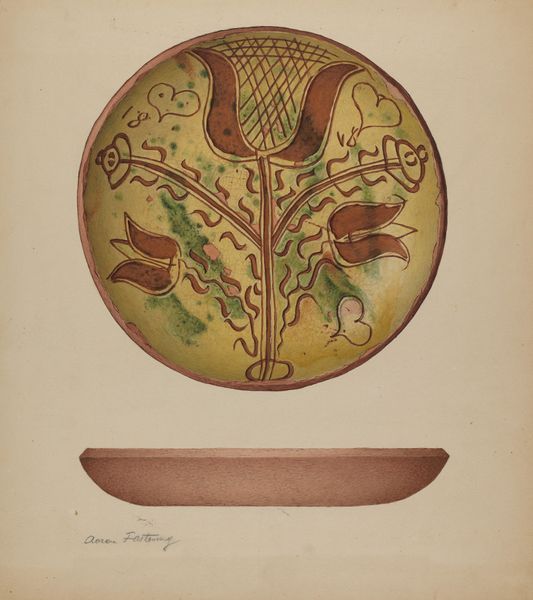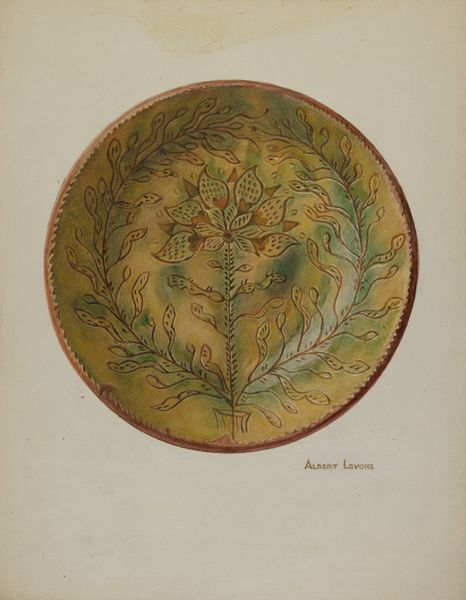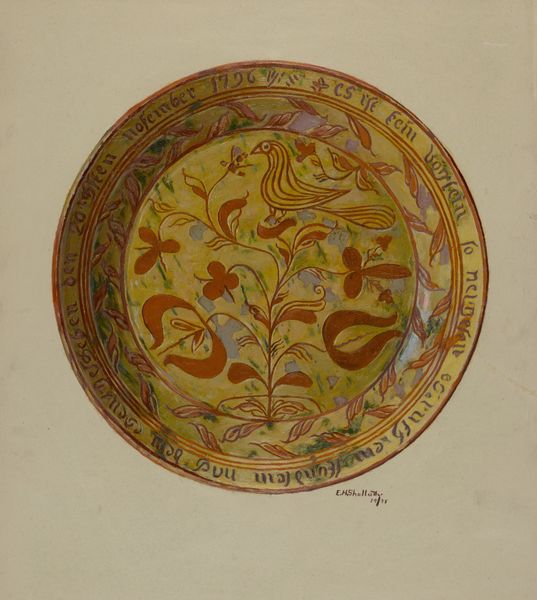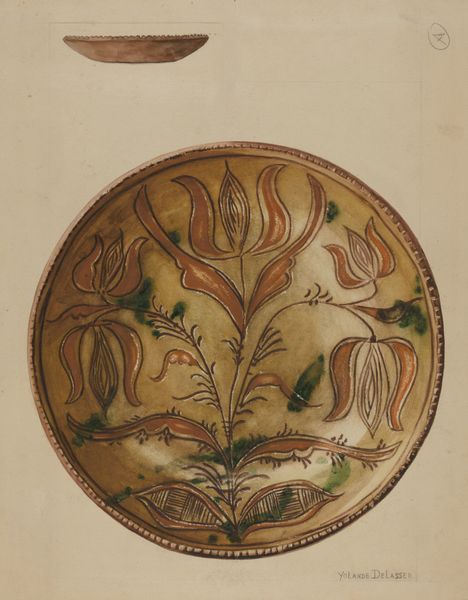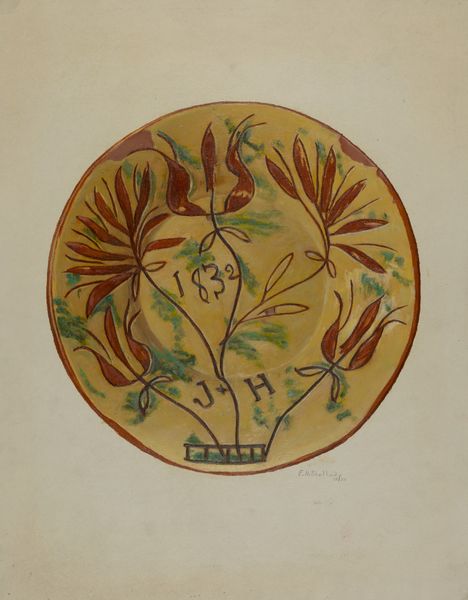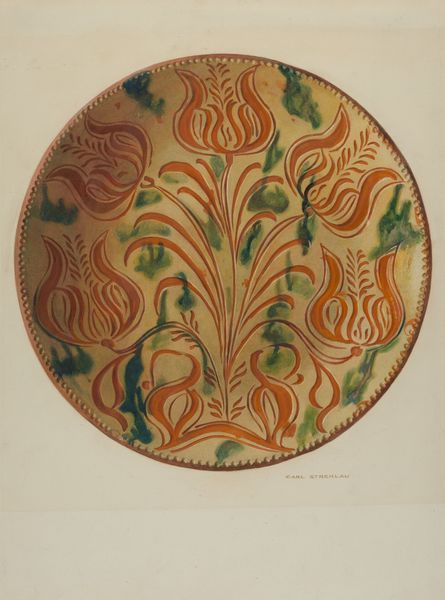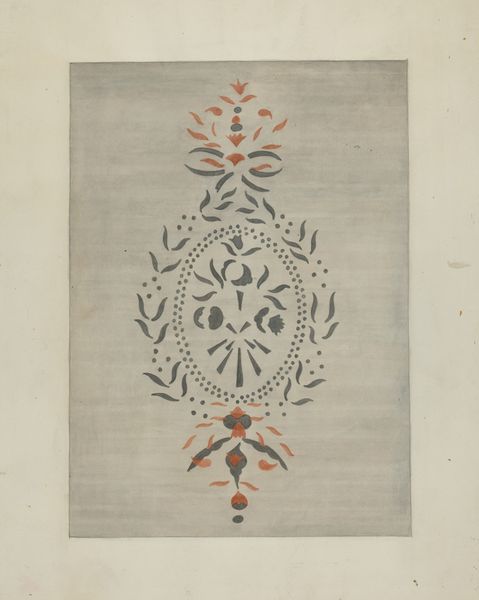
drawing
#
drawing
#
folk-art
#
pottery
#
linocut print
#
folk-art
Dimensions: overall: 29.2 x 22.6 cm (11 1/2 x 8 7/8 in.) Original IAD Object: 13" in diameter; 1 3/4" high
Copyright: National Gallery of Art: CC0 1.0
Curator: Well, this image definitely transports you back in time. What catches your eye first about this "Pa. German Plate," made around 1937 by Charles Garjian? Editor: I'm struck by how the brown and olive hues give it a warm, rustic feel. The folksy flower design almost feels like it’s been stamped on, maybe a linocut print? It evokes simple, rural life. Curator: You've keyed into something crucial – it likely references traditional Pennsylvania German folk art, a vibrant community known for their pottery. We need to think about the material culture that supported and celebrated it. Editor: Precisely! Folk art's function within society is what gives it power. Items like these weren’t meant to be showcased behind glass, but lived with, eaten from, part of daily rituals and a connection to the past. I wonder, do the archives suggest its display context? Was it originally meant for museums? Curator: It's more complicated. Garjian appears to be studying or documenting this folk tradition, as we see these technical drawings beneath the rendering. Think about his process: rendering it flattens and changes the material essence, altering its societal place. What sort of consumer or user would view these images? Editor: Right. This piece creates distance while also aiming to preserve culture. The act of recreating elevates craft into a more studied art form that loses its raw element from use. Is this act deconstructing folk imagery to repackage it for a modern audience removed from the original cultural production? Curator: Indeed! It makes us think about cultural appropriation and commodification. Is he celebrating the inherent craftsmanship and practical utility, or romanticizing a simplified notion of rural life? Editor: These are pivotal questions when examining folk art within museum settings. Understanding who gets to interpret and display such objects reflects power dynamics at play in culture itself. Curator: It forces us to grapple with not just the item but how historical, social and power dynamics shaped production, and how its legacy and cultural significance are viewed today. Editor: I'll be leaving today thinking about who this was originally made for versus who can own and appreciate this kind of image today in a public archive.
Comments
No comments
Be the first to comment and join the conversation on the ultimate creative platform.
